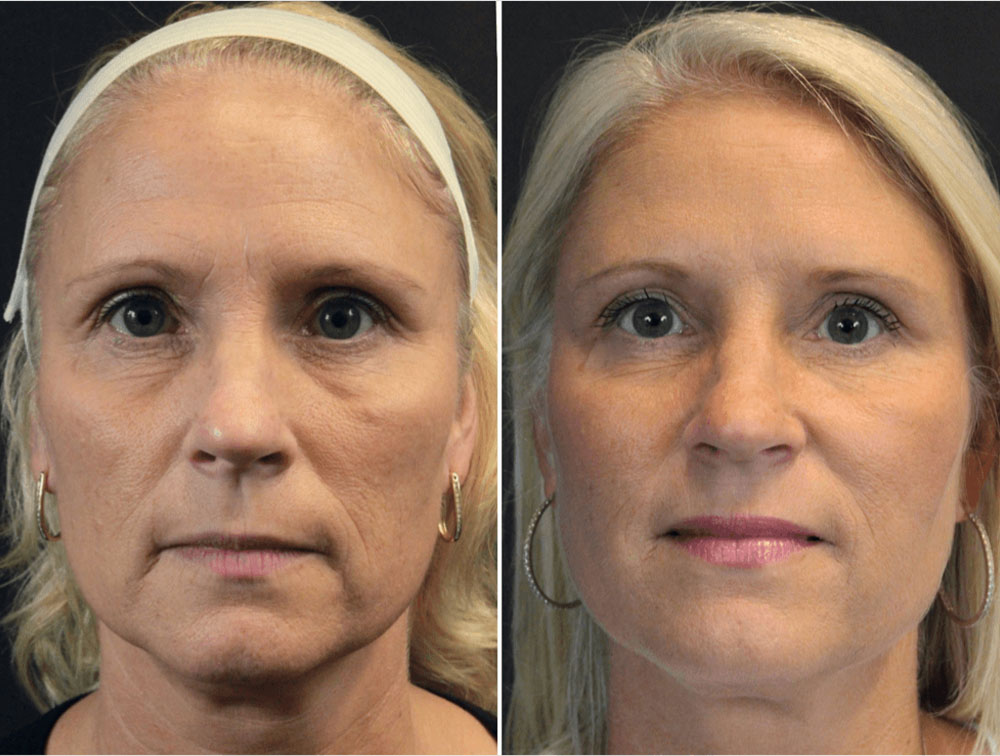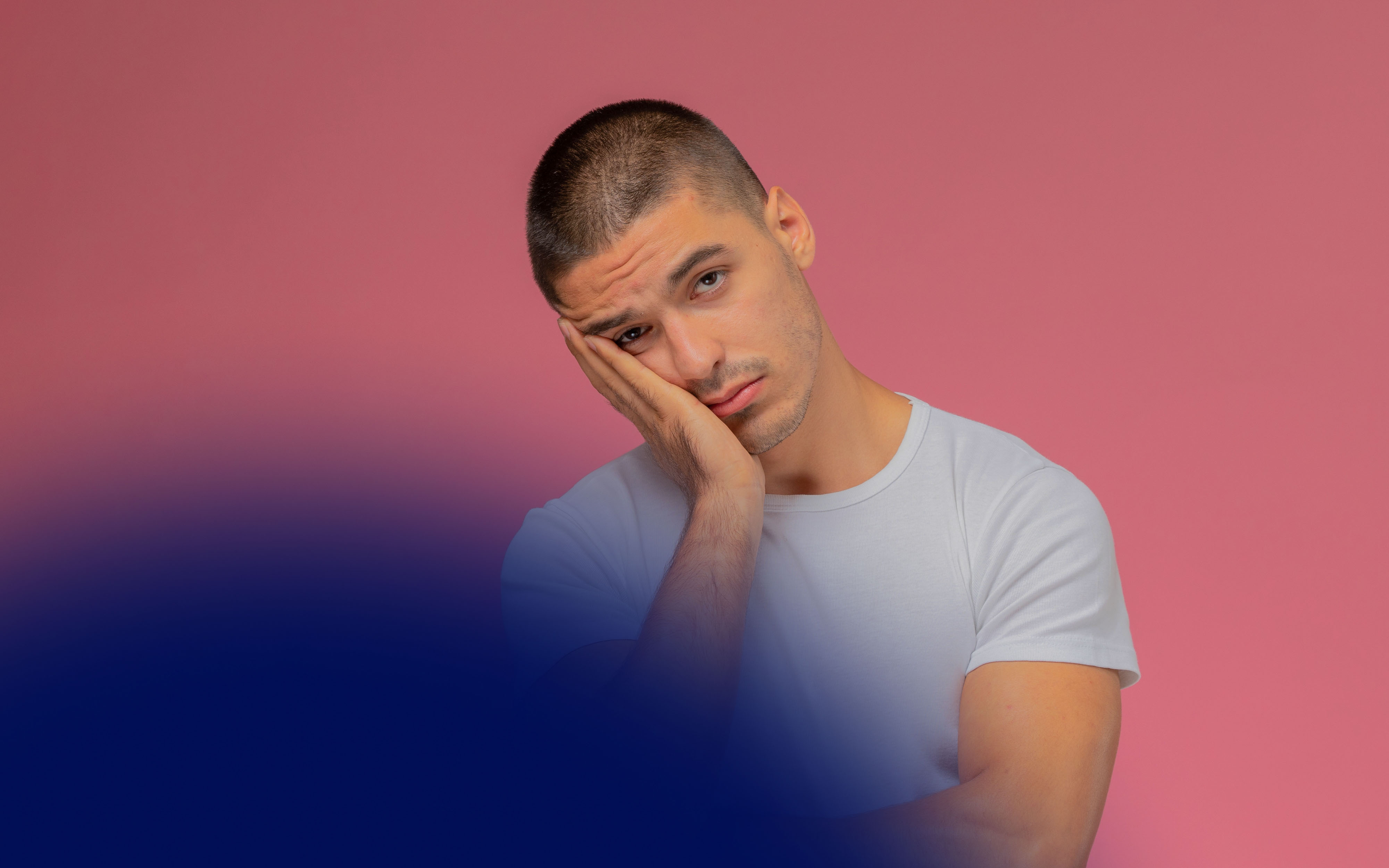
A tired-looking face can significantly influence how a patient is perceived, often making them appear older, less energetic, or even emotionally burdened. While the term “tired face” may be subjective, the desire to look refreshed and well-rested is nearly universal.
Medical aestheticians and cosmetic doctors are well-positioned to treat tired face concerns using targeted protocols that restore skin integrity, volume, and tone. For advanced instruction, the Tired Face Facial Rejuvenation Course, part of the broader HubMed Ed aesthetic courses portfolio, offers in-depth clinical training on assessment and multimodal treatment strategies.
What Does the Tired Face Mean?
In the aesthetic field, the term “tired face” refers to a combination of visual cues and structural changes. These changes project fatigue, sadness, or aging, regardless of a patient’s actual energy level or emotional state. It is a composite expression marked by under-eye hollowing, downward-turned lips, volume loss, and diminished skin radiance.
Clinically, this phenotype involves midface deflation, periorbital aging, soft tissue descent, and textural changes due to reduced collagen and elastin. A tired face is not just about wrinkles, it’s about proportion, shadow, and skin quality. Addressing it requires a holistic approach that evaluates facial architecture, skin tone, and patient perception.

Main Causes of a Tired Face
The most common cause is natural aging. With age, the dermis thins, fat pads shift, and the skeletal structure loses support, creating shadows and folds that weren’t there before.
Other contributors include collagen depletion, glycation, oxidative stress, dehydration, and repeated facial expressions. Sun damage accelerates photoaging, while hormonal shifts, especially in menopause, exacerbate textural irregularities and dullness. Younger patients influenced by social media aesthetics may also present with concerns related to facial fatigue, underscoring the need for generationally attuned clinical assessments.
Key Symptoms and How to Recognize Them
Medical professionals should look for a blend of visual and tactile symptoms when diagnosing a tired, looking face. These include:
- Hollow or dark under-eye circles (tear trough deformity).
- Nasolabial fold deepening and marionette shadows.
- Midface flattening and jowl formation.
- Skin dullness, crepey texture, and enlarged pores.
- Static fine lines and dynamic wrinkles around the eyes and mouth.
These symptoms manifest differently across age groups. Younger patients often present with periorbital puffiness and early signs of under-eye shadowing, while older individuals are more likely to exhibit pronounced midface volume loss, dermal thinning, and tissue laxity.
Lifestyle and Environmental Contributors
Many patients are surprised when their face looks fatigued despite feeling well. This disconnect is often driven by long-term lifestyle habits and environmental stressors. Lack of restorative sleep, high stress levels, alcohol use, smoking, and poor hydration all directly affect skin tone and elasticity.
Environmental stressors, such as pollution and UV exposure, cause oxidative stress, breaking down collagen and accelerating cellular senescence. Chronic psychological stress and physical fatigue can compromise microcirculatory function. This impairs skin repair mechanisms and contributes to a fatigued appearance, leading many patients to say, “My face is tired.”
Skin Rejuvenation Treatments for Tired, Looking Skin
Skin-focused treatments are often the first step in enhancing skin clarity and smoothness. Options include:
- Chemical peels (e.g., glycolic or TCA) to exfoliate dead skin and stimulate turnover.
- Microneedling with or without PRP for dermal collagen stimulation.
- Laser resurfacing (ablative and non-ablative) to improve tone and texture.
- Medical-grade facials using exfoliants, hydration boosters, and LED light therapy.
These treatments are ideal for patients whose primary concern is “my face looks dull and tired” without significant volume loss.

Injectable Solutions to Restore Freshness
Injectables remain a cornerstone in tired face correction. Key options include:
- Dermal fillers (HA-based or biostimulatory) for midface volume loss, tear trough correction, and contour enhancement.
- Botox for softening frown lines, crow’s feet, and other dynamic wrinkles that contribute to a fatigued appearance.
- Skin boosters (e.g., microdroplet HA or polynucleotides) for skin hydration and glow without changing facial shape.
Used strategically, these treatments can reverse the downward vectors of aging and restore facial freshness without looking “done.”
Regenerative and Collagen, Stimulating Therapies
Regenerative approaches go beyond camouflage - they aim to heal and rebuild tissue quality from within. Clinically effective methods include:
- Platelet-Rich Plasma (PRP) - autologous treatment that stimulates fibroblast activity and enhances skin texture.
- Exosome therapy delivers signaling molecules that promote dermal regeneration and reduce inflammation.
- Biostimulators such as poly-L-lactic acid or calcium hydroxylapatite to gradually thicken skin and support structure.

Combination Treatment Protocols for Optimal Results
A single treatment approach is often insufficient to comprehensively address the tired face phenotype. Optimal outcomes are typically achieved through a combination of modalities that target volume restoration, skin texture, and muscular dynamics.
An example protocol may include:
- Midface HA filler for lift.
- Tear trough correction.
- PRP or exosome therapy.
- Light laser resurfacing or microneedling.
- Botox for dynamic areas.
This multimodal approach enables clinicians to address the individual anatomical and structural contributors to facial fatigue with precision and consistency.
At-Home Skincare to Support In-Clinic Treatments
Skincare compliance is critical to maximizing clinical outcomes. Encourage patients to use:
- Antioxidants (e.g., Vitamin C, niacinamide) to combat oxidative damage.
- Retinoids for cellular turnover and collagen production.
- Moisturizers with ceramides or peptides to support the skin barrier.
- Broad-spectrum SPF to prevent photoaging and pigmentation.
Also consider recommending face masks for tired skin and tailored formulations like tired face cream to support recovery between treatments.
Patient Education and Long-Term Maintenance
Empower your patients with knowledge. Explain that fixing a tired face isn’t a one-time procedure, but a journey of maintenance, prevention, and lifestyle adaptation.
Encourage regular follow-ups, seasonal skin assessments, and ongoing aesthetic support. Incorporate discussions about stress management, nutrition, and restorative sleep. Ultimately, long-term freshness depends on internal balance as much as external care.
In Conclusion
Understanding how to fix a tired-looking face starts with identifying the root causes, both internal and external, and using a personalized, multimodal treatment strategy. Aesthetic professionals who integrate skin health, volume restoration, and regenerative medicine can achieve outcomes that extend beyond surface-level correction.
FAQs
Does caffeine make you look tired?
Caffeine itself doesn’t directly make you look tired, but overconsumption can disrupt sleep and dehydrate the skin, both of which contribute to a fatigued appearance.
What is beauty sleep?
Beauty sleep refers to high-quality, uninterrupted sleep that allows the skin to repair, restore hydration, and produce collagen, contributing to a healthier, fresher appearance.
Does stress cause your face to look tired?
Yes, chronic stress leads to hormonal imbalance, poor circulation, and collagen breakdown, all of which can cause puffiness, dullness, and premature aging.
Why does my face feel weak?
A weak facial sensation can result from fatigue, dehydration, or poor muscle tone, but should be evaluated if persistent to rule out neurological or vascular causes.
References:
- Sample I. Looking tired can harm your social life, say researchers. The Guardian. May 17, 2017. Accessed August 4, 2025. https://www.theguardian.com/lifeandstyle/2017/may/16/looking-tired-can-harm-your-social-life-say-researchers
- Sundelin T, Lekander M, Kecklund G, Van Someren EJW, Olsson A, Axelsson J. Cues of fatigue: effects of sleep deprivation on facial appearance. Sleep. 2013;36(9):1355–1360. doi:10.5665/sleep.2964. https://pmc.ncbi.nlm.nih.gov/articles/PMC3738045/
- Dermatology UK. What to Do About Dull Tired Skin. Dermatology UK. Published December 12, 2024. Accessed August 4, 2025. https://dermatology.org.uk/dull-tired-skin/
- Flament F, Qiu H, Abric A, Charbonneau A. Assessing changes in some facial signs of fatigue in Chinese women, induced by a single working day. Int J Cosmet Sci. 2018;40(6):552-558. doi:10.1111/ics.12506. https://onlinelibrary.wiley.com/doi/abs/10.1111/ics.12506
Disclaimer:
This article is intended for licensed medical professionals. All protocols, dosages, and treatment insights referenced herein are based on published literature. The content is not intended to encourage application, diagnosis, or self-treatment of unlicensed individuals, and should not be used as a substitute for the clinical judgment of a qualified healthcare provider.

